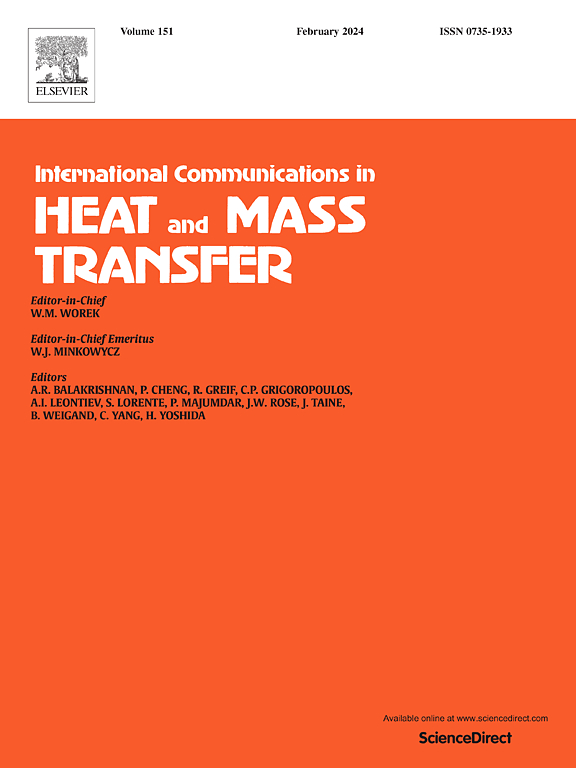Working fluid selecting of the enhanced DPORC system with double-layer multi-objective optimization based on the improved WRSR method considering three pinch point temperature differences ratios
IF 6.4
2区 工程技术
Q1 MECHANICS
International Communications in Heat and Mass Transfer
Pub Date : 2025-06-28
DOI:10.1016/j.icheatmasstransfer.2025.109266
引用次数: 0
Abstract
This paper centered on the dual-pressure ORC (DPORC) and its derived enhanced DPORC (SRPH-DPORC, DRP-DPORC) to surmount the constraints of pinch-point temperature difference analysis, fixed-weight optimization, and the fuzzy quantization classification of the working fluid. Thermodynamic, economic, environmental, and sustainable performance in the system was explored from the perspective of three pinch-point temperature difference ratios. The enhanced weighted rank-sum ratio (WRSR) was employed for two-layer multi-objective optimization to acquire the optimal system performance of diverse working fluids under the optimal three pinch-point temperature difference ratio and to quantitatively categorize the working fluids. The results indicate that the comprehensive performance of the SRPH-DPORC system is superior. The optimal performance corresponds to a temperature difference ratio of 1:4:15. The performance of the working fluid R365mfc is more favorable, and the economic performance of the zeotropic mixtures containing R365mfc and R601a is better. The working fluid R365mfc or the zeotropic mixture containing R365mfc is preferable under the weighting factor scheme emphasizing thermal performance and economic performance. Under the weighted factor scheme that emphasizes environmental performance and sustainable development performance, the working fluids R601a and R1233zd are more suitable. The working fluid c2butene is not appropriate for operation in the SRPH-DPORC systems.
基于改进WRSR法考虑三个夹点温差比的增强型DPORC系统工质选择双层多目标优化
本文以双压力ORC (DPORC)及其衍生的增强DPORC (SRPH-DPORC, DRP-DPORC)为中心,克服了工作流体的夹点温差分析、定权优化和模糊量化分类的限制。从三个点温差比的角度探讨了系统的热力学、经济、环境和可持续性能。采用增强型加权秩和比(WRSR)进行两层多目标优化,获得最优3点温差比下不同工质的最优系统性能,并对工质进行定量分类。结果表明,SRPH-DPORC系统综合性能优越。最佳性能对应于1:4:15的温差比。工质R365mfc的性能较好,含有R365mfc和R601a的共沸混合物的经济性能较好。在强调热工性能和经济性能的加权系数方案下,工质为R365mfc或含R365mfc的共沸混合物为优选。在注重环境性能和可持续发展性能的加权因子方案下,工质R601a和R1233zd较为合适。工作流体c2丁烯不适合在SRPH-DPORC系统中运行。
本文章由计算机程序翻译,如有差异,请以英文原文为准。
求助全文
约1分钟内获得全文
求助全文
来源期刊
CiteScore
11.00
自引率
10.00%
发文量
648
审稿时长
32 days
期刊介绍:
International Communications in Heat and Mass Transfer serves as a world forum for the rapid dissemination of new ideas, new measurement techniques, preliminary findings of ongoing investigations, discussions, and criticisms in the field of heat and mass transfer. Two types of manuscript will be considered for publication: communications (short reports of new work or discussions of work which has already been published) and summaries (abstracts of reports, theses or manuscripts which are too long for publication in full). Together with its companion publication, International Journal of Heat and Mass Transfer, with which it shares the same Board of Editors, this journal is read by research workers and engineers throughout the world.

 求助内容:
求助内容: 应助结果提醒方式:
应助结果提醒方式:


